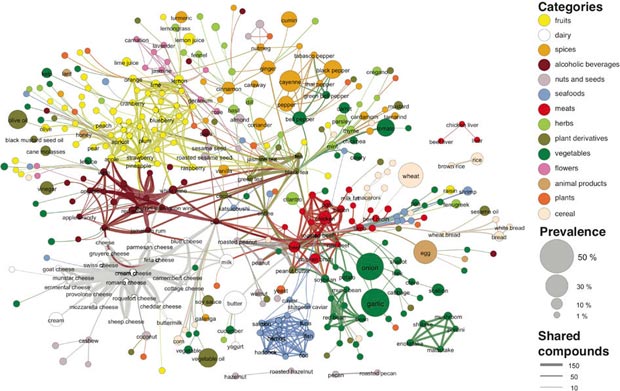Afternoon Snack 9.21.12

Welcome to the first edition of Afternoon Snack! Think of this as a food-specific version of the Quickies (the Tasties, perhaps?)–once or twice a week, I’ll summarize some cool food-science related articles I’ve found around the web.
Fruit salad trees, gastrophysics, and waterless beer after the jump!
Forget about GMOs–fruit salad trees are the true Franken-fruit. Grown by grafting the tissues or two or more fruit trees together so that they grow as one plant, fruit salad trees produce multiple types of fruit. For example, the tree pictured above produces a number of different stone fruits (peaches, plums, apricots, etc); others can produce different kinds of citrus, apples, or pears. Scientific American explores the science behind these unusual plants, and our Australian readers have the opportunity to buy their own from the Fruit Salad Tree Company.

At the end of August, a gastrophysics symposium was held in Copenhagen. The definition is up for debate, but it seems fair to say that gastrophysics is “science for the benefit of good food.” Symposium attendees came from a variety of disciplines and covered topics like the science of egg yolks, optimizing sous vide conditions for cooking steak, and how to determine whether flavors will go together. Food was promoted as a good medium for communicating science. (I nominate Harold McGee to be the Neil DeGrasse Tyson of gastrophysics.)
Pat’s Backcountry Beverages has developed a portable carbonator system that allows hikers to carbonate the drinks they bring with them into the wilderness, and now they’ve gone one step further: they’ve produced a beer concentrate in powder form that can be added to water and then carbonated, so that backpackers can enjoy beer without having to schlep 6-packs around. Their proprietary process allows them to create the concentrate using almost no water (so, they’re not taking normal beer and then dehydrating it), which makes the product more environmentally friendly. My question then, is where this concentrate is coming from–are they just replicating the flavor of beer, in which case your end result is beer-flavored fizzy water (with an alcohol content)? I want to say that the brewing process adds something to beer that you can’t emulate successfully, but maybe I’m wrong. Anyone want to try it out?
Featured image from The Food Lab: Perfect Boiled Eggs
If you have a suggestion for an Afternoon Snack, send me a tweet @aynsavoy or send us an email and mention “Afternoon Snack!”


I want a fruit salad tree. Seriously. I’m gonna try to make one.
It’s obviously possible. Are you actually going to try?
Heck yes! I think I will start easy with a lemon/orange/lime or something similar. Reading the original article it says in California most lemons are grown on orange rootstock, so should be doable!
Cool! Document the process!
I have a 4-in-one apple tree. I had a 4 fruit tree, one with apricots, nectarines, peaches and plums on it,or it would have.. except my dog chewed the tree down… and killed it. 🙁